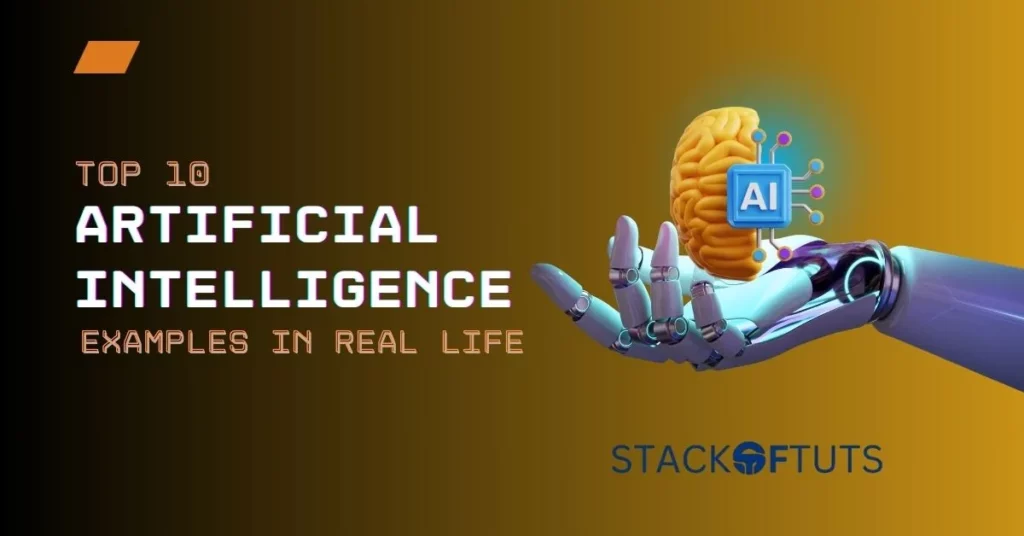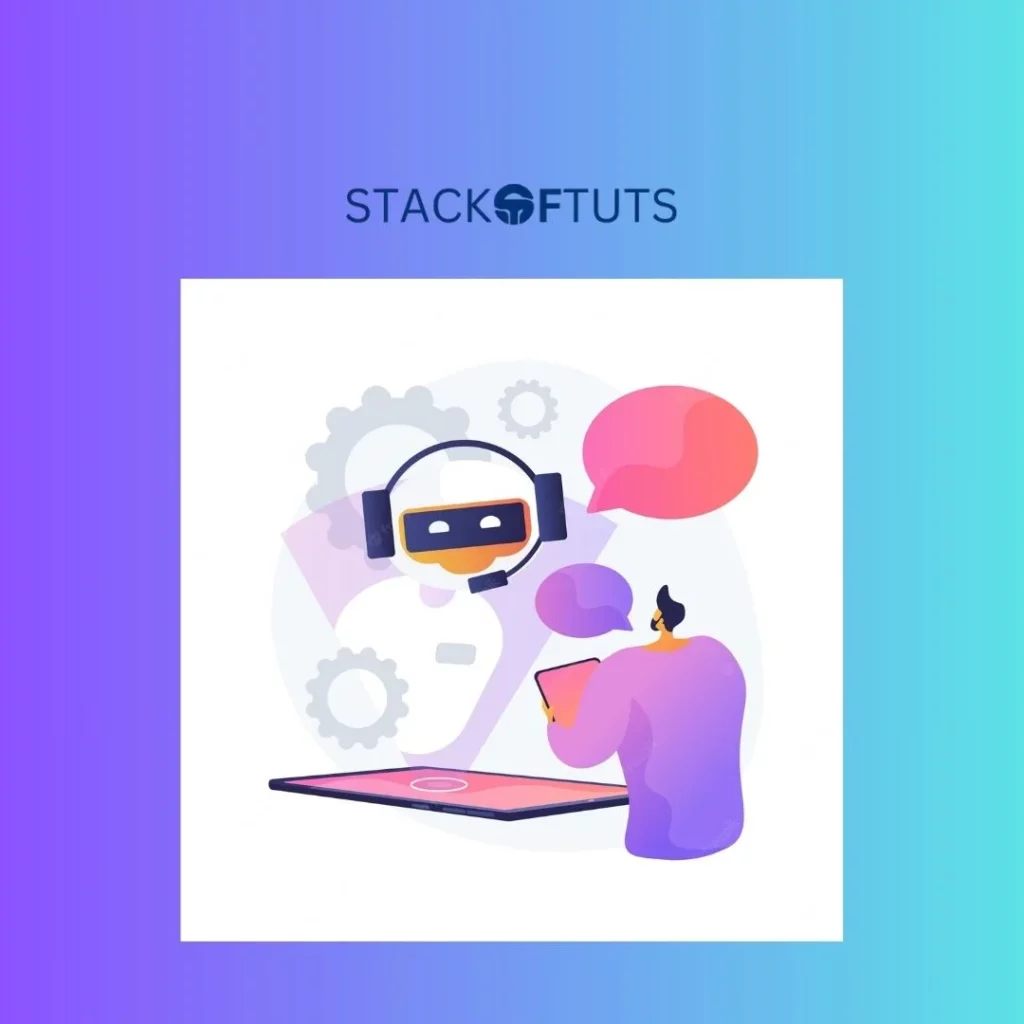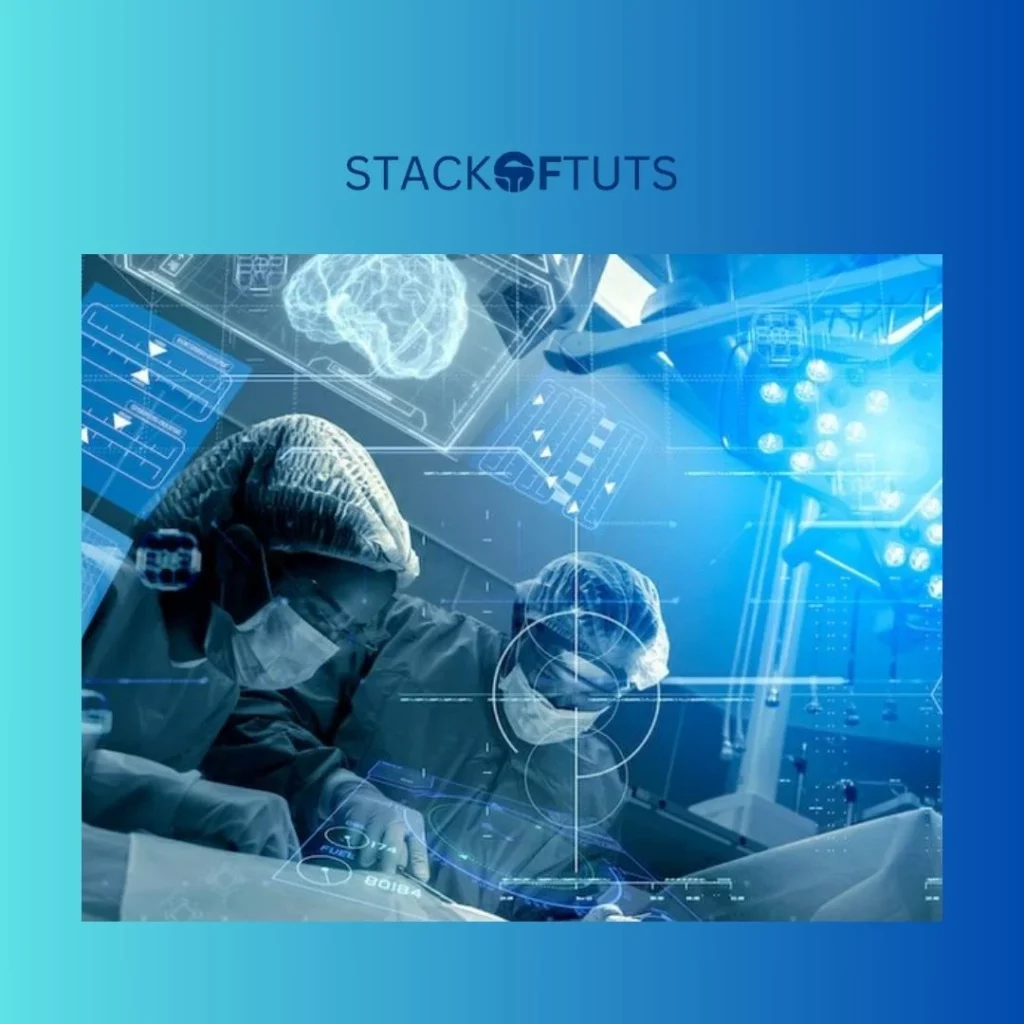
AI, short for Artificial Intelligence, isn’t just a concept found in science fiction movies anymore; it’s an actual, working technology that’s woven into the fabric of our day-to-day lives. This article talks about the Top 10 AI examples in real life. From asking your phone how to get somewhere to getting movie picks from Netflix, these are cool features that many of us use all the time. Sometimes, we don’t even know it’s AI helping us out! Let’s get into how AI is making everyday things better for us.
Also read: Top 10 applications of artificial intelligence
What is AI?
Artificial intelligence, commonly known as AI, falls under the umbrella of computer science and is dedicated to creating smart machines that can act intelligently. In basic language, AI enables computers to make choices and think in a way that closely resembles human decision-making. This covers an extensive array of abilities, from learning and understanding to solving problems and sensing the environment, even stretching towards the capability for social interactions in the future.
The Importance of AI: A Quick Overview
- Automation: AI makes tasks faster and more accurate. For example, factories use AI to sort products, reducing manual labor.
- Personalization: AI helps tailor your online experience. Netflix uses it to recommend shows you’ll likely enjoy based on what you’ve watched before.
- Data Analysis: AI can quickly make sense of huge amounts of data. In healthcare, it helps in the early diagnosis of diseases like cancer.
- Safety: AI improves security measures. For instance, banks use AI to detect fraudulent transactions and block them in real time.
- Global Challenges: AI can tackle big issues like climate change by optimizing energy use in smart homes and even entire cities.
Top 10 AI examples in real life
- Voice-Controlled Assistants: Siri, Google Assistant, Alexa
- Recommender Systems: Amazon, Netflix
- Fraud Detection in Banking
- AI-Driven Healthcare Diagnostics
- Autonomous Vehicles: Tesla’s Autopilot
- Customer Service Chatbots
- Social Media Algorithms: Facebook, Instagram
- Language Translation Tools: Google Translate
- Smart Home Devices: Nest, Ring
- Streaming Services: Netflix, Hulu
1. Personal assistants: Siri, Google Assistant, and Alexa

Voice-operated helpers such as Siri, Google Assistant, and Alexa use tech like natural language understanding (NLU) and machine learning to interpret and react to what you’re saying. These systems convert your spoken phrases into written words, figure out the meaning behind those words, and then generate an appropriate action or reply.
How do we use them in daily life?
Imagine you’re cooking spaghetti and your hands are sticky with tomato sauce. You remember that you need to call your mom. Just utter, “Hey Siri, call Mom,” and the assistant takes care of it, sparing you the need to clean your hands and manually dial the number. These voice-activated assistants make multitasking easier, thereby saving time and effort.
2. Recommender Systems in E-Commerce Platforms

E-commerce giants like Amazon and Netflix use machine-learning algorithms to personalize your experience. These algorithms analyze your past behavior, as well as the behavior of others, to predict and recommend products or shows you might be interested in.
How do we use them in daily life?
Have you ever found yourself lost in the Amazon rabbit hole, clicking from one recommended product to another? That’s not serendipity; it’s AI. It helps you discover products that are truly aligned with your interests, thereby streamlining your shopping experience and saving you the hassle of sifting through countless options.
3. Fraud Detection Systems in Banking

Fraud detection algorithms analyze transaction data in real-time for irregularities. They examine factors like spending patterns, location, and time to identify potentially fraudulent activities.
How do we use them in daily life?
Thanks to AI, you no longer have to panic as much about losing your credit card. If someone in a different location tries to make a large purchase, the bank’s AI system will flag this as unusual activity and block the transaction until they can verify it with you. This keeps your finances safer and gives you peace of mind.
4. Healthcare Diagnostics

In the medical field, AI algorithms are capable of analyzing medical imaging, identifying patterns in symptoms, and even recommending possible treatments. Some AI systems are trained to recognize abnormalities in X-rays, MRIs, and CT scans, often with a higher degree of accuracy than human doctors.
How do we use them in daily life?
Imagine you go for a routine check-up, and the doctor has AI software to analyze your X-ray results. The AI helps detect early-stage cancer that even experienced radiologists might have missed. Early diagnosis can be a game-changer for successful treatment and survival rates.
5. Autonomous Vehicles

Self-driving vehicles are equipped with sensors, cameras, and GPS to navigate the road. These cars collect and process this data in real time to make driving decisions, from identifying road signs to avoiding pedestrians.
How do we use them in daily life?
While fully autonomous vehicles aren’t mainstream yet, features like Tesla’s Autopilot offer a glimpse into the future. Such systems can manage lane-keeping and adaptive cruise control, reducing the strain on long drives and improving road safety.
6. Chatbots in customer service

Chatbots, often employed in customer service, use NLP to interpret and respond to user queries. They are programmed to assist with basic tasks and answer frequently asked questions.
How do we use them in daily life?
Chatbots make it easy to get quick answers. If you’re wondering about your bank balance or trying to track a package, you can get instant responses without having to wait in long phone lines, making your life a bit easier.
7. Social media algorithms

Platforms like Facebook and Instagram use AI algorithms to curate the content that appears on your feed. These algorithms analyze your past interactions to show you content that you are more likely to engage with.
How do we use them in daily life?
Thanks to AI, your social media feeds become personalized storyboards that display content from your close friends, family, and interests you care most about, making your social media experience more relevant and engaging.
8. Language Translation Services

Translation services like Google Translate use machine learning algorithms that are trained on a massive dataset of text in multiple languages.
How do we use them in daily life?
If you’re traveling abroad and come across a menu in a foreign language, just whip out your phone and use Google Translate to understand what’s on offer. This service breaks down language barriers and makes international travel less intimidating.
9. Smart Home Devices

Smart home devices like Nest or Ring use AI to learn from your behavior. For instance, smart thermostats learn your temperature preferences and schedule, adapting automatically to save energy.
How do we use them in daily life?
A smart thermostat can sense when you’re not home and adjust the temperature to save energy. When it notices you’re on your way back, it sets the temperature back to your preference, ensuring you always come home to a comfortable environment.
10. Video Streaming Services

Streaming platforms like Netflix and Hulu use AI to analyze your viewing history, engagement time, and even the genres you frequently visit to recommend shows and movies you might like.
How do we use them in daily life?
Thanks to AI, your Netflix recommendations often point you to your next favorite show, eliminating the need to scroll endlessly through options. This personalization makes your downtime more enjoyable.
FAQs
AI stands for artificial intelligence. It’s a type of computer technology that allows machines to think and make decisions similar to humans.
AI is used in many ways, like voice assistants (Siri, Alexa), online shopping recommendations, and even diagnosing medical conditions.
Generally, AI is designed to be safe, but it depends on how it’s used. For example, AI in autonomous cars aims to make driving safer, but the technology must be thoroughly tested.
AI can automate tasks, which may replace some manual jobs. However, it also creates new roles and industries that didn’t exist before.
Conclusion
Artificial intelligence is not just a futuristic concept; it’s a present-day reality that enriches various aspects of our daily lives. From simplifying shopping to enhancing healthcare, AI is here to stay, continually evolving to offer more sophisticated and personalized experiences. As we become more accustomed to these AI-driven conveniences, it’s exciting to imagine what other transformative innovations are just around the corner.
Thanks!
Also read: Artificial Intelligence in Internet Marketing 2023